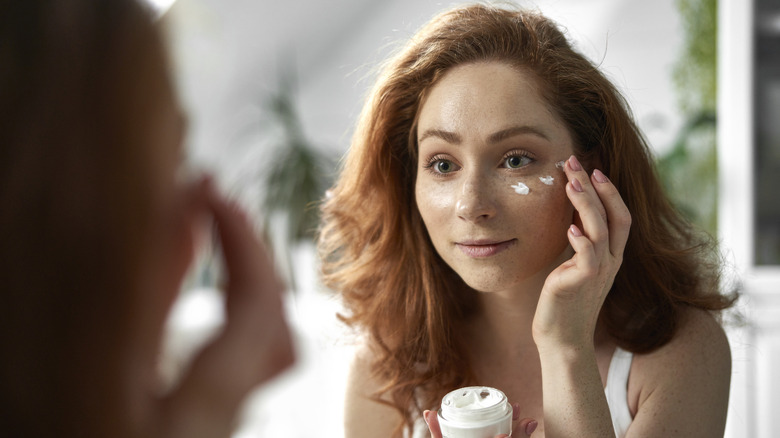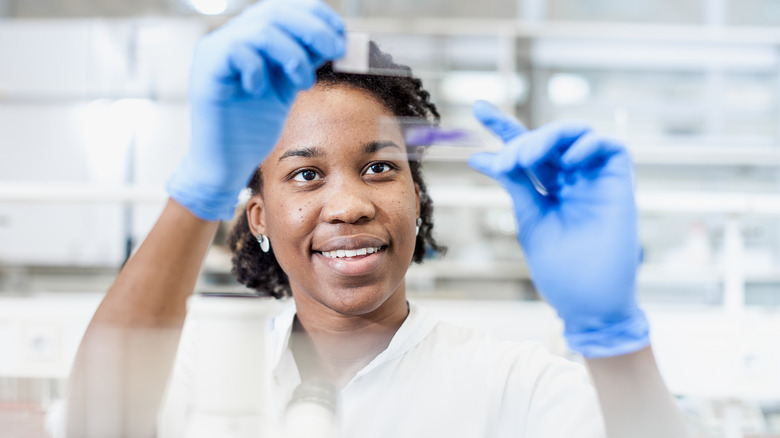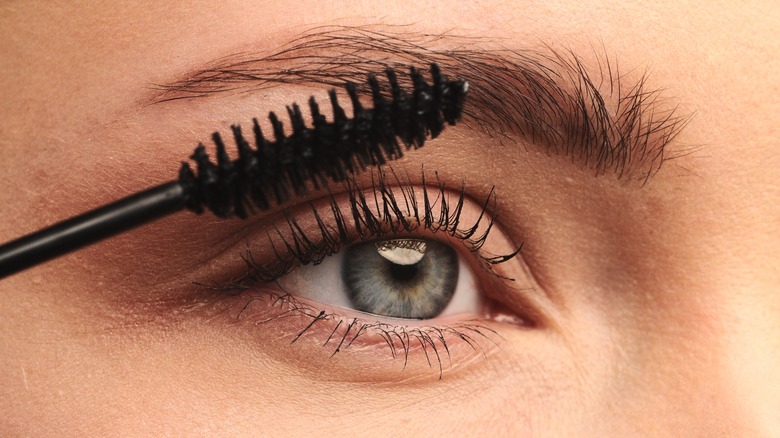Preservatives Have A Bad Reputation, But They're Important For Your Beauty Routine
The move away from harmful chemicals and toward clean beauty over the past 20 years mirrors the push against heavily processed foods and toward whole foods like organic produce and lean proteins. We've experienced a slow, welcome awakening about what ingredients are in our food, what chemicals are in our skincare, and what to do about it. Many clean beauty products are now promoted as preservative-free.
But when it comes to cosmetics, not just makeup and moisturizer, but shampoo, shaving cream, and mouthwash, they actually must have preservatives. Most beauty products contain water, and water conducts waterborne bacteria. And a handy fact about our skin: over 1000 species of bacteria and microbes call it home. Our skin is the wild west of bacteria — the sheriffs (good bacteria) keep the outlaws away (unwelcome microbes). Add those two together — an unpreserved jar of moisturizer plus your clean yet microbe-y fingers — and you've got a problem. Preservatives are essential for a healthy beauty routine, yet there's a reason they developed a bad reputation.
What's the deal with parabens?
There are three types of preservatives: natural, synthetic, and chemical. Natural preservatives include tea tree oil, thyme, oregano, and honey. Synthetics include tocopheryl acetate and food-grade sodium benzoate, and chemical preservatives include parabens and formaldehyde. Formaldehyde isn't added to products, but forms as a result of chemical processes. Synthetic preservatives can irritate the skin, but the natural alternatives can unfortunately be less effective.
Parabens are controversial. They've been labeled dangerous because they're thought to be endocrine disrupters and toxic to the reproductive system — but because they're an efficient anti-microbial, they've been widely used across all beauty and cosmetic products since the 1950s after some bacteria-infected facial lotions caused blindness. The parabens used in the U.S. for cosmetics include methylparaben, propylparaben, butylparaben, and ethylparaben. There are five different parabens that have been banned in the E.U., and the parabens that are used in European cosmetics are regulated. Preservatives aren't regulated by the FDA. The rules are changing though, and new beauty legislation could affect your favorite brands.
A small study from 2004 seemed to link parabens and breast cancer, sparking worry, and yet it's been criticized by the Washington Post as "shaky science." The study was conducted without the use of non-cancerous breast tissue as a control. Considered a trusted professional resource, Cosmetics Info comes out in favor of parabens but without providing a larger context or acknowledging the controversy.
How long should you keep your cosmetics?
How long you can safely keep using beauty products after opening varies, and there may not be an expiration date. Most products will have a period-after-opening symbol on the label indicating the number of months you can use it before you should throw it away. Clean beauty is a meaningful movement, but if your products are preservative-free, or have natural preservatives, make sure they stay fresh.
If your moisturizer smells different or develops another texture, it's likely gone bad with bacteria or fungi. Mascara wands and other products with applicators come directly into contact with fungi and microbes with every use. To prevent infection, the Mayo Clinic suggests tossing and replacing mascara and liquid eyeliner every three months.
The other broad guidelines are: water-based foundation, pencil, and gel eyeliners and lip pencils are good for a year, oil-based foundation can last for 18 months, and blushes and lip gloss can be used from six months to a year. They suggest lipsticks are OK to use from one to two years, and properly stored, moisture-free powder can last up to two years.


